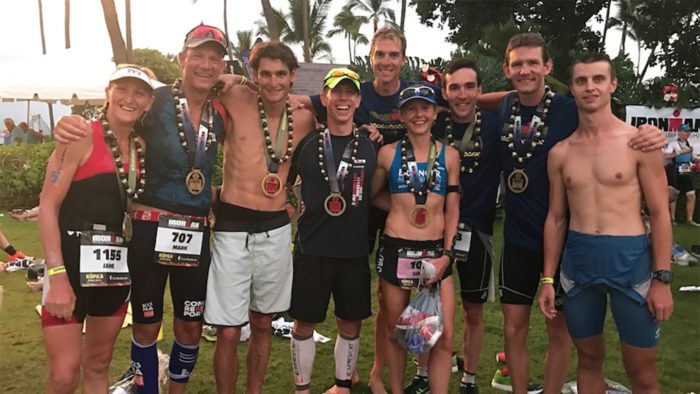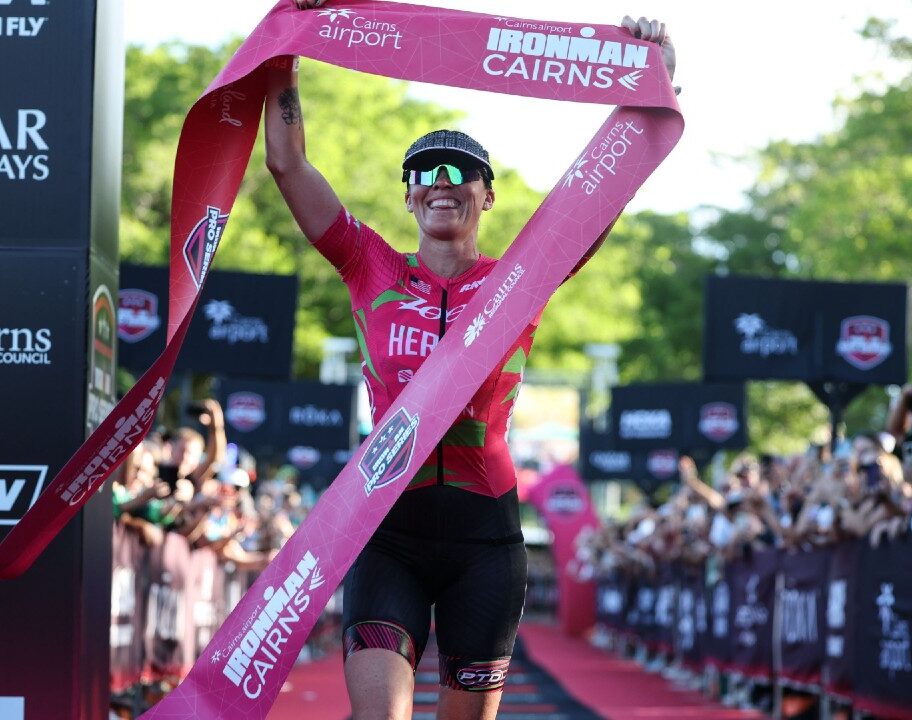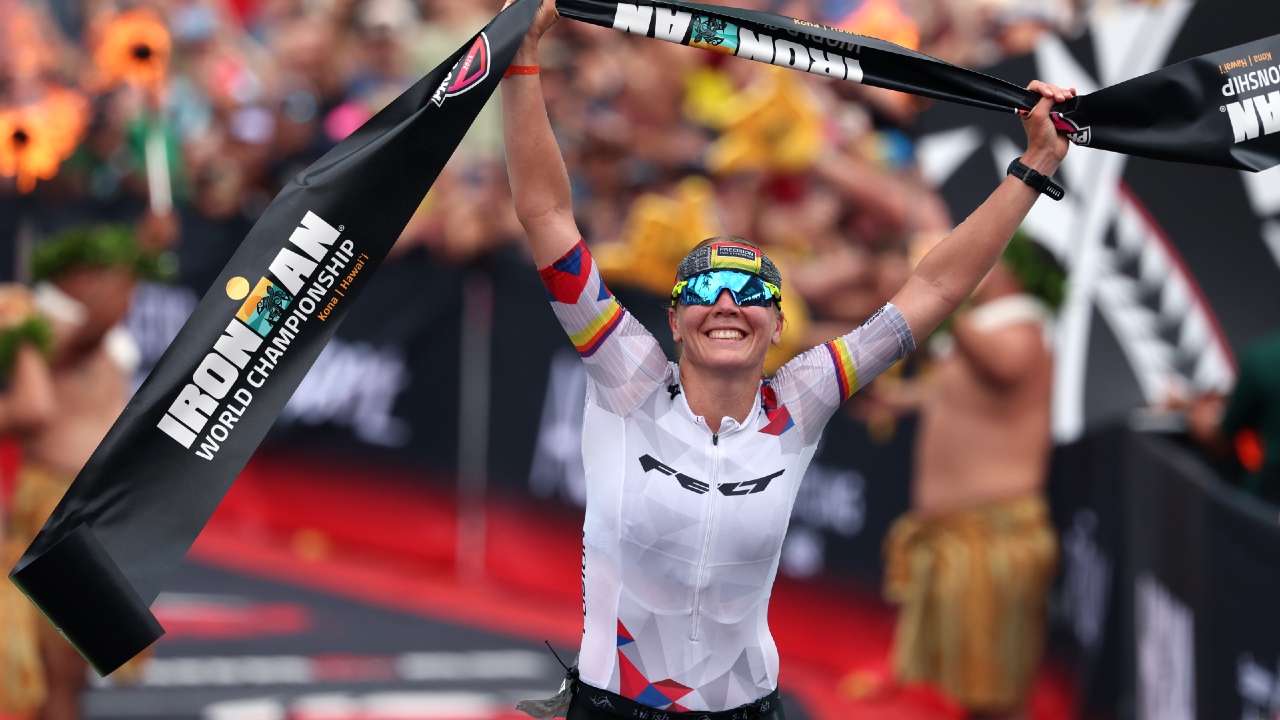This is the second of a two-part series looking at how you can make it to triathlon’s ‘Big Dance’ and race in Kona. For many, this is the holy grail of of our sport. How do you get there? Well, start here and find out…
On October 10th, 2009 I swam into the water off Dig Me beach and lined up at the start of the Ironman World Championship. Being there was the result of a five year project that had taken over my life. I’d trained and raced around the world in pursuit of a place; after seven attempts I finally qualified at Ironman UK.
The mission started small with Sprints, Olympics and Halfs’, but once I’d finished my first Ironman, Austria, I was set on Kona. Not that I’d come that close. If my short time in the sport had taught me anything it was that hard work was rewarded. So hard work was my approach – I built my life around training.
Commitment…
Do you have to be obsessive? It probably helps, but at the very least commitment is a key factor for any Kona qualifier. A willingness to make things work towards their goal, often meaning sacrifices elsewhere in their life. Commitment is needed to achieve the consistency – another key factor – of training required to build the fitness a Kona qualifier possesses.
My commitment led to me taking a year away from work to pursue the goal, but I can assure you that isn’t a requirement. Every athlete I’ve coached to Kona holds down a regular job. They have the commitment to manage consistent training throughout much of the year, typically racking up at least 15 hours a week in season. They maintain this around their work and social lives (admittedly, the latter is often neglected at their peak).

Focus…
There’s another factor I’ll mention – focus. The qualifiers I know are on top of the details, they’re meticulous about what they’re doing and how they’re doing it. An athlete I coach just qualified in Barcelona; he’s always worked hard, but thanks to increased focus on recovery and nutrition, his performance stepped up a gear this year. Regular massage, physio trips and simply getting an early night helped ensure he trained well throughout the season.
Talking with other coaches, I hear similar themes…
Rob Wilby, head coach of Team Oxygenaddict (www.oxygenaddict.com), says,
“The biggest tip I can give is to find a daily, and weekly, routine that works for you, and stick to it. Consistent training over a period of two to three years, week in and week out, is essential for anyone who’s serious about qualifying.”
Again it’s about the need for consistency in the long term. Kona is a project that can take a number of years to achieve.
Julian Nagi of Team Nagi Coaching (www.teamnagicoaching.co.uk) puts it like this:
“To qualify for Kona an athlete needs to possess certain qualities – firstly they need a burning desire to get there, secondly they need to fully commit to the process and thirdly they need to have a passion and love for what they do.”
Passion and commitment. It’s a rare athlete that makes it to Kona by chance, most have dedicated hours of their life to the process.
Asking some of those preparing to race in Hawaii confirms what the coaches think…
Will Newbury, racing Kona for the first time and head coach at 9 Endurance Coaching (www.9endurancecoaching.co.uk), had this to say: “I’m guessing you’re going to get most saying consistency, consistency, consistency! And that is so very true, but I also think that belief in yourself, your ability and desire and the training you have logged. Go out there during the race, stick to your plan, execute the plan and believe that it is enough to get you there.”
I’ll second those comments about sticking to your race plan: my athlete in Barcelona stuck with a run/walk strategy to deliver a 3:09 marathon; it takes belief in the plan to take regular walk breaks while racing for a slot.
I also asked eight-time Kona qualifier Roger Canham what he thought had led to so many trips to Hawaii:
“Clearly, as a busy age grouper, being consistent EVERY week isn’t a given, but in my view essential. The specific sessional work is important, but at a high level, 15 to 20 hours per week, 52 weeks a year is a good guide. Some might be able to manage on less, or work on some sort of annualised periodisation that ends up with the same total, but for me, it’s just a week in, week out consistency thing. Build a big diesel engine and you will be in a strong place to qualify.”
Roger has been consistent for many years and also credits a solid strength program as part of that success.
Finally, Paul Burton (http://blacklinelondon.com/paul-burton/), racing in Hawaii for the second time, made these practical points:
“If you’re a man in your 30s like me, unless you’re particularly gifted and can qualify anywhere, choose your race wisely (Lanza, Nice and Austria are highly competitive – best avoided!) Get yourself as fit as possible, execute the race well and cross your fingers for some luck on finishing in the slots.”
A reminder that, as we saw in part one, the odds are tight and there is fierce competition for those slots. You may not get it first time round, but you’ve got to keep trying.
So how do you race in Kona next year? You carefully pick and choose a qualifying race, making sure you can hit the required times (I’ve got plenty of statistics (http://www.coachcox.co.uk/ironman-world-championship-qualification/) on this). Then you commit yourself to training consistently, keeping focus on every aspect of your preparations.
Work hard, race hard and cross your fingers.







![Caroline Livesey wins the first ever Scottish National Gravel Championships in August 2025. [Photo credit: Outsider Events]](https://www.tri247.com/wp-content/uploads/2025/11/Caroline-Livesey-scots-national1.jpg)













